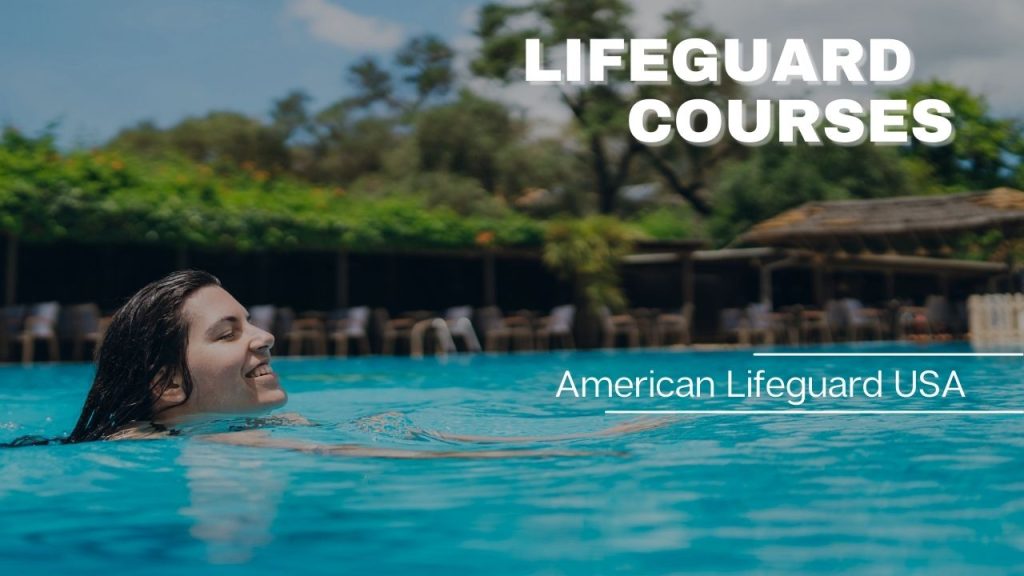When you think of summer, images of sandy beaches, sparkling pools, and people enjoying the water come to mind. These aquatic environments provide a refreshing respite from the sweltering heat and a source of fun and relaxation for millions of people worldwide. However, with such enjoyment also comes the responsibility of ensuring water safety. This is where lifeguards play a crucial role, and the impact of lifeguard courses on safety cannot be overstated.
Lifeguards are the unsung heroes of aquatic settings, tirelessly watching over swimmers, responding to emergencies, and preventing accidents.
They undergo rigorous training in lifeguard courses to equip themselves with the knowledge and skills necessary to save lives and maintain a safe environment. In this article, we will explore the significant impact of lifeguard courses on safety, discussing the training process, skills acquired, and the overall contribution of lifeguards to public welfare.
The Lifeguard Training Process
Lifeguard training is a comprehensive process that covers various aspects of water safety, rescue techniques, and medical response. These courses are typically offered by organizations such as the American Lifeguard and the United States Lifesaving Association (USLA). The training process can vary, but it generally consists of the following components:
CPR and First Aid
Lifeguard courses often start with instruction in cardiopulmonary resuscitation (CPR) and basic first aid. Lifeguards must be prepared to respond to various medical emergencies, from minor injuries to life-threatening situations.
Water Rescue Skills: Lifeguards learn various water rescue techniques, including how to reach, throw, and go. They are trained to use equipment like rescue tubes and rescue boards to assist swimmers in distress.
Spinal Injury Management
Handling potential spinal injuries is a critical aspect of lifeguard training. Lifeguards learn how to stabilize the neck and spine and provide appropriate support for victims with suspected spinal injuries.
Lifeguarding Techniques
Lifeguards learn how to scan the water, identify potential hazards, and enforce safety rules.
Training in AED Use: Automated external defibrillators (AEDs) are increasingly available at public pools and beaches. Lifeguard courses often include training on how to use AEDs to restore a normal heart rhythm in victims of sudden cardiac arrest.
Simulated Scenarios: Lifeguard candidates participate in simulated rescue scenarios to apply their knowledge and skills in real-life situations. These scenarios help prepare them for the challenges they may face on the job.
Physical Fitness
Lifeguard candidates must meet specific physical fitness requirements, including swimming and endurance tests. Physical fitness is crucial for performing rescues and maintaining vigilance throughout long shifts.
Written Exams: Lifeguard courses usually conclude with written exams to assess candidates’ understanding of water safety, rescue techniques, and medical response.
After completing the training program and passing all required tests, candidates receive their lifeguard certification, which is a testament to their readiness to serve as lifeguards.
The Impact of Lifeguard Courses on Safety
The impact of lifeguard courses on safety is profound and far-reaching, influencing both the individuals who undergo training and the communities they serve.
Preventing Drowning: The primary goal of lifeguard training is to prevent drowning. Drowning is a leading cause of accidental death, and lifeguards are the first line of defense against this tragedy. Through their training, lifeguards develop the skills to recognize and respond to drowning incidents swiftly and effectively.
Their ability to administer CPR, first aid, and water rescues can mean the difference between life and death for a victim.
Educating the Public: Lifeguards not only respond to emergencies but also play a role in educating the public about water safety. They enforce pool rules, provide information on safe swimming practices, and conduct water safety classes.
Maintaining a Safe Environment: Lifeguards help create a safe and controlled environment at aquatic facilities. Their presence deters risky behavior and ensures that swimmers follow the rules, reducing the likelihood of accidents.
Minimizing Risk: Through regular scanning of the water, lifeguards identify and address potential hazards before they escalate into dangerous situations. This proactive approach minimizes risk and prevents accidents.
Community Well-Being: The presence of well-trained lifeguards contributes to the overall well-being of a community.
Emergency Preparedness: Lifeguard courses also equip individuals with valuable skills that extend beyond the pool or beach. Lifeguards often become valuable community members who can respond to emergencies in various settings, applying their knowledge of CPR, first aid, and rescue techniques.
Career Opportunities: Lifeguard certification can lead to career opportunities in aquatics, recreation, and public safety. It provides individuals with marketable skills and the potential to pursue a rewarding profession.
Conclusion
Lifeguard courses have a profound impact on safety by equipping individuals with the knowledge and skills necessary to prevent accidents, respond to emergencies, and create safe aquatic environments. Lifeguards are the silent protectors who stand between danger and the people they serve, and their training is the cornerstone of their ability to do so effectively.
Alos Read About: IS THERE A LIFEGUARD CLASS NEAR ME?
As we head into another summer season, let us not underestimate the vital role lifeguards play in keeping our beaches, pools, and water parks safe. Lifeguard courses are not just about learning to swim and rescue; they are about instilling a culture of safety, preparedness, and community well-being. The impact of lifeguard courses on safety is immeasurable, and it is our responsibility to support and appreciate the dedicated professionals who undergo this essential training.
You may also like
-
Sports Picks from AI: Enhancing Athletic Analysis and Predictions
-
Unveiling the Triple Treat Mazaplay, T20Exchange, and Betbook247 – A Symphony of Online Entertainmen
-
Creating Engaging and Effective Basketball Practice Sessions
-
A Comprehensive Guide to Finding the Best Paddleboards for Your Adventure
-
Best sportswear manufacturer in Pakistan

